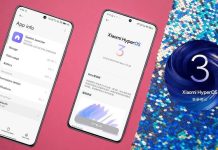Apple is finally gearing up to join the foldable smartphone race with what could become the most refined folding phone ever released. After years of patents, rumors, and waiting on the sidelines, multiple leaks and insider reports suggest that Apple’s first foldable iPhone is set for launch in 2026. Unlike most of its competitors, Apple is aiming to get it absolutely right from day one — and the details emerging so far are both innovative and ambitious.
Here’s a deep dive into everything we know about the foldable iPhone to date — including cover display size, hinge innovation, biometric decisions, camera specs, and potential pricing.
Apple isn’t new to the concept of foldable displays. In fact, the company filed its first patents related to foldable tech in 2014. However, true to its reputation for perfecting rather than pioneering, Apple has strategically held back, allowing rivals like Samsung, Huawei, and Motorola to test the market — and make the early mistakes.
Now in 2025, the device is reportedly in the New Product Introduction (NPI) phase at Foxconn, Apple’s manufacturing partner. Analysts including Mark Gurman (Bloomberg) and Ming-Chi Kuo signal that mass production could begin as early as Q3 2025, setting the stage for a global release in H2 2026.
Reliable sources suggest the foldable iPhone will follow a book-style folding design, more like the Samsung Galaxy Z Fold series rather than a vertical flip phone. When opened, it may offer a stunning 7.8-inch OLED display with a 4:3 aspect ratio — ideal for reading, browsing, video streaming, and multitasking.
Yet, what really sets Apple apart is the goal of a “crease-free” folding display, made possible by inserting a metal support plate under the screen. This unique mechanism allows the display to fold evenly and distribute pressure without leaving a visible crease — a major pain point in existing foldables.
Reported specs indicate:
-
-
-
-
Liquid metal components in the hinge
All of these suggest a robust build without compromising on aesthetics or portability. Apple’s use of liquid metal for the hinge could add durability while accommodating the folding mechanism for repeated use without long-term wear.
While Apple will design the iPhone Fold experience end-to-end, it has teamed up with Samsung Display to manufacture the folding OLED panels. Samsung is said to be setting up a dedicated production line at its A3 factory in South Korea exclusively for Apple’s foldable display orders.
This marks a rare move for Apple — outsourcing a core component for the sake of production yield, quality, and proven tech.
The rear camera system is expected to include:
-
-
Possibly similar to current iPhone Pro models with improved optics
-
, removing the need for a notch or punch hole
Instead of Face ID, the foldable iPhone may reintroduce Touch ID, integrated within the power button — a space-saving move consistent with the iPad Air and iPad mini models. This would give users quick and reliable biometric authentication even when Face ID sensors aren’t viable on a completely foldable display.
According to supply chain sources, Apple’s chosen supplier for the metal support plates inside the hinge assembly is Fine M-Tec, responsible for 80% of these internal components. The plates will allegedly cost $30–$35 per unit, a reflection of the engineering required to eliminate display stress points.
Using laser-drilled micro-patterns, these plates relieve tension and improve folding stability — hinting at an iPhone that might finally overcome the weakest link in every foldable phone to date: the hinge durability.
If timelines stick, Apple could debut the foldable iPhone in September or October 2026, possibly under the name iPhone Fold or “iPhone Flip Pro.”
Reports from UBS and Ming-Chi Kuo estimate that the first-generation foldable iPhone will be priced at:
That would make it Apple’s most expensive iPhone ever, surpassing even the current iPhone 16 Pro Max, and placing it in direct competition with:
Despite all the technological advances, foldables still make up a small slice of the market. Durability concerns, high costs, and thick form factors have kept adoption low. But Apple has a history of changing consumer habits.
Think iPhone in 2007. Think AirPods in 2016. If Apple delivers a foldable iPhone that’s stylish, durable, and crease-free, it could potentially:
-
Redefine mainstream perception of foldable phones
-
Force app developers to rethink UI/UX for larger displays
-
Push Android OEMs to further refine their hardware
Apple’s foldable iPhone won’t be the first of its kind, but if the leaks and engineering plans hold true, it could end up being the defining model that brings foldables into the mainstream.
From an ultra-thin titanium body and crease-free OLED display, to Face ID alternatives and durability enhancements, Apple appears to be focused on long-term usability, not just flashy design.
If launched successfully, 2026 might be remembered as the year foldables finally turned the corner — with Apple, once again, leading the charge.




